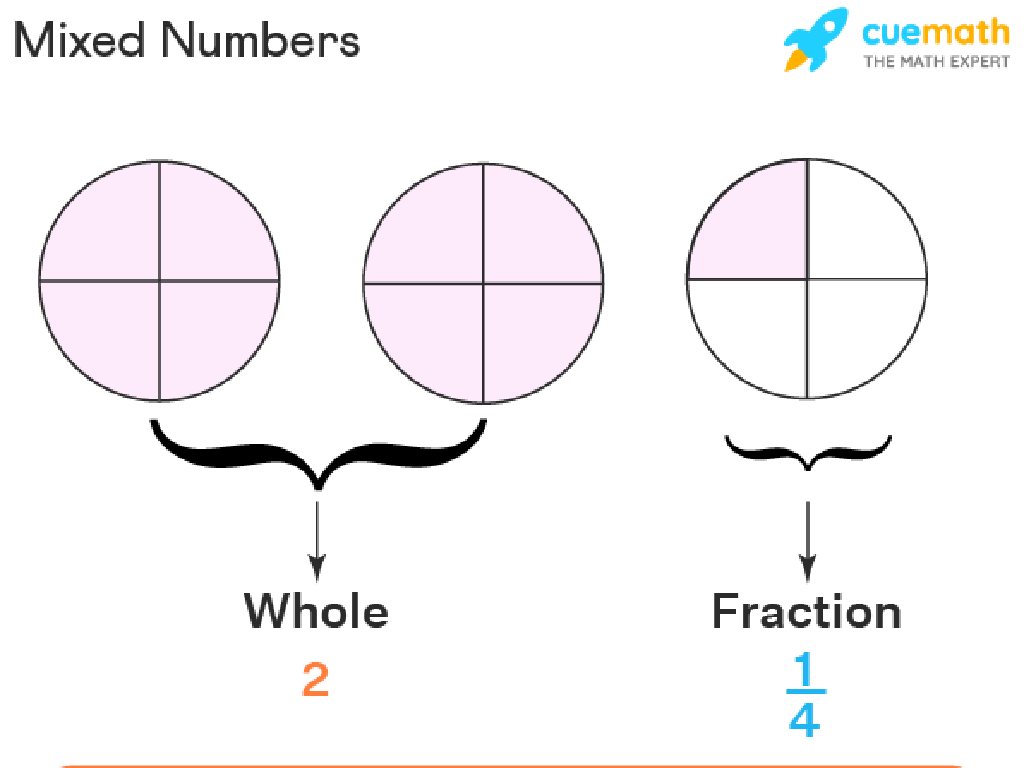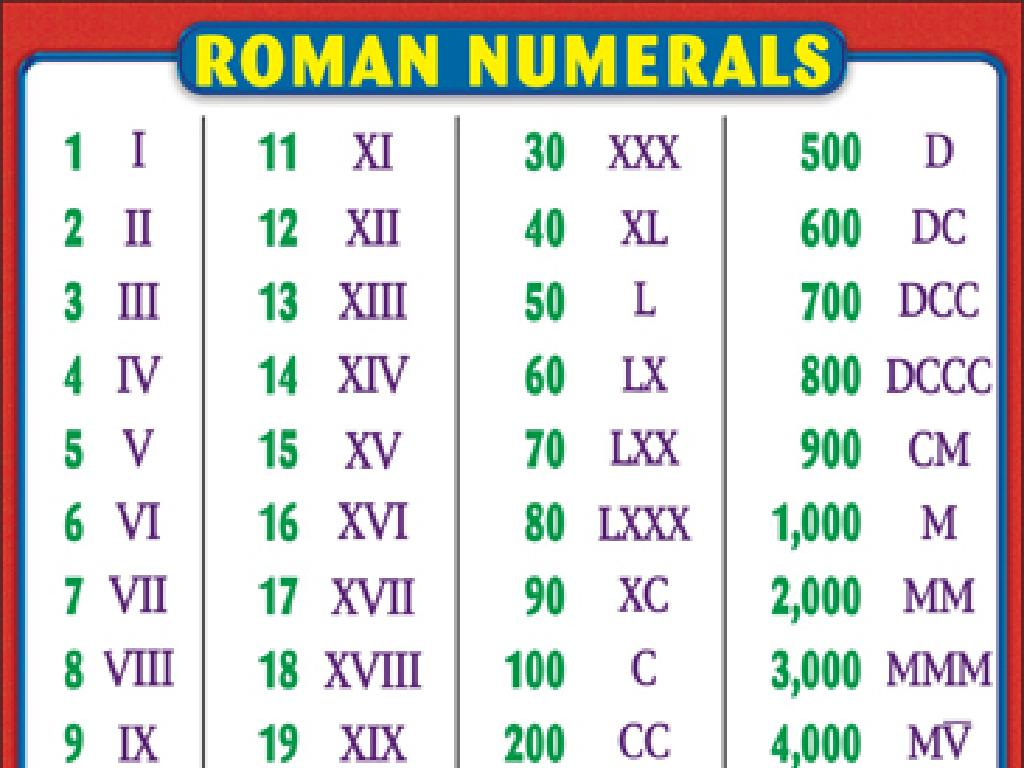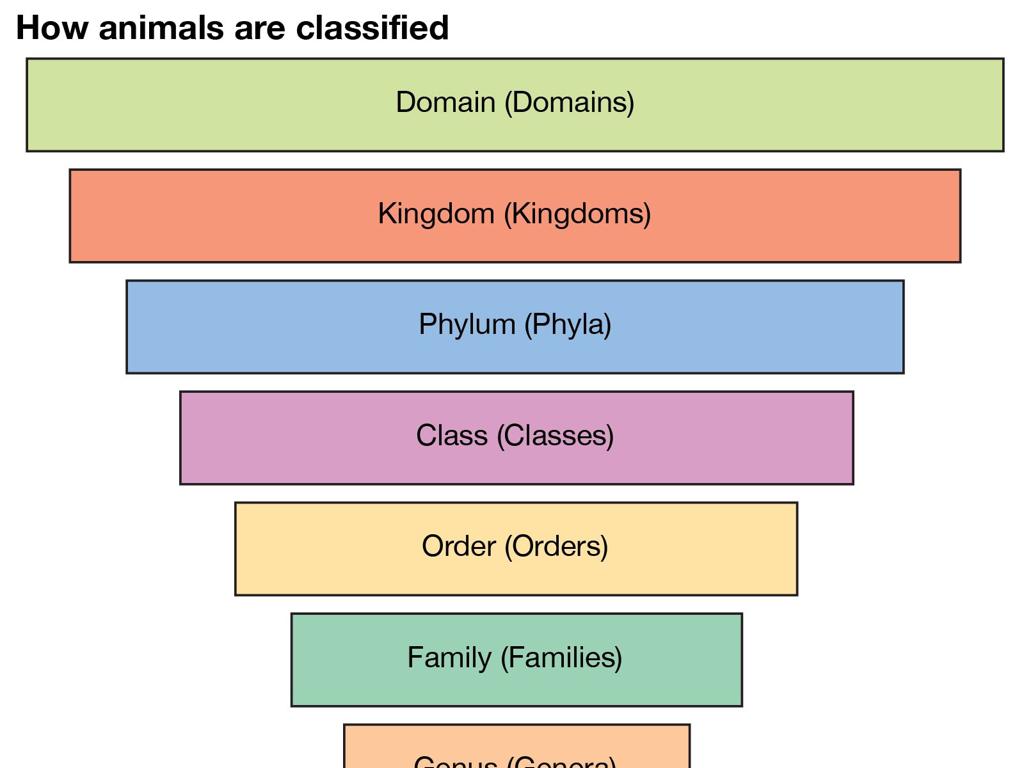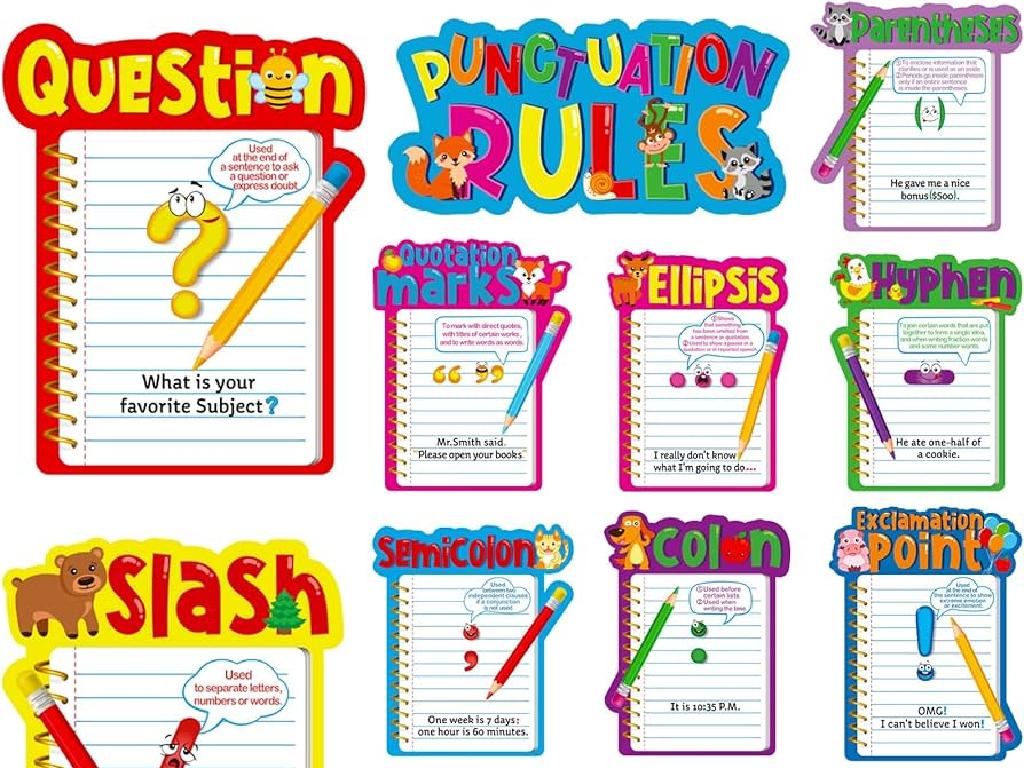Body Systems: Circulation And Respiration
Subject: Science
Grade: Fourth grade
Topic: Animals
Please LOG IN to download the presentation. Access is available to registered users only.
View More Content
Exploring Circulatory & Respiratory Systems
– Our body’s amazing systems
– Journey through the circulatory system
– Heart pumps blood, delivering oxygen and nutrients
– Discovering the respiratory system
– Lungs exchange oxygen and carbon dioxide
– How they keep us alive and well
– They work together to fuel and cleanse our body
|
This slide introduces the circulatory and respiratory systems, highlighting their importance in maintaining life and health. Begin by engaging students with the wonder of the body’s internal workings. Explain how the heart and blood vessels work to transport vital substances throughout the body. Then, describe how the lungs are essential for bringing oxygen into the body and removing carbon dioxide. Emphasize the synergy between these two systems to help students appreciate how our bodies function as a whole. Use diagrams and physical activities to illustrate concepts, such as simulating how the heart pumps blood or how lungs expand and contract.
Understanding Circulation in Our Bodies
– What is circulation?
– Circulation is blood flow through our body
– The heart: Our blood pump
– The heart beats to move blood everywhere
– Blood’s role in our body
– Blood carries important stuff for our cells
– Oxygen and nutrients delivery
– Blood takes oxygen and food to cells
|
This slide introduces the concept of circulation, a critical function in the human body. Circulation refers to the continuous movement of blood, which is driven by the heart – often compared to a pump. Emphasize the importance of the heart in maintaining the flow of blood throughout the body. Explain that blood is essential for life because it transports oxygen from the lungs and nutrients from the digestive system to all the cells in the body. These substances are crucial for energy and growth. Use relatable examples, like how a school bus carries students to school, to help students understand how blood carries oxygen and nutrients to cells. This foundational knowledge sets the stage for further discussion on the circulatory system and its role in overall health.
Exploring the Circulatory System
– The heart: a powerful pump
– The heart moves blood to the whole body.
– Arteries: pathways for blood flow
– Arteries carry blood away from the heart.
– Veins: the return route for blood
– Blood travels back to the heart through veins.
– Capillaries: tiny blood vessel connectors
– Capillaries join arteries and veins together.
|
This slide introduces the basic components of the circulatory system, which is crucial for transporting nutrients, oxygen, and waste throughout the body. The heart acts as a pump, pushing blood through the arteries, which are the large vessels that carry oxygen-rich blood away from the heart to the body’s tissues. Veins are the vessels that return oxygen-depleted blood back to the heart. Capillaries are small, thin blood vessels that connect arteries to veins and facilitate the exchange of oxygen, carbon dioxide, and other substances between blood and tissues. Use models or diagrams to help students visualize the circulatory system. Encourage them to think about how this system is similar to a city’s water supply network, with the heart as the central pump and the vessels as pipes.
Understanding Respiration
– Respiration: Breathing and oxygen use
– Respiration is the process of inhaling oxygen and exhaling carbon dioxide.
– Lungs function like balloons
– When we breathe in, our lungs expand to fill with air, similar to how balloons inflate.
– Oxygen and carbon dioxide exchange
– In our lungs, oxygen from the air we breathe is swapped with carbon dioxide from our blood.
– Importance of respiration
– This process is crucial for our cells to produce energy and keep us alive.
|
This slide introduces the concept of respiration to fourth-grade students. Begin by explaining that respiration is the process our bodies use to breathe in oxygen, which is essential for life. Compare the lungs to balloons to help students visualize how they work. Discuss the exchange of gases, where oxygen is taken into the body and carbon dioxide, a waste product, is released. Emphasize the importance of respiration for the survival of all animals, as it provides the necessary oxygen for cells to produce energy. Use simple language and relatable analogies to ensure comprehension.
Exploring the Respiratory System
– Breathing in through nose and mouth
– Air is warmed and filtered in the nose, then passes to the lungs through the mouth.
– Air’s journey down the trachea
– The trachea is a tube that carries air to the lungs, like a tunnel for breath.
– Lungs: Oxygen meets blood
– Tiny air sacs in the lungs called alveoli transfer oxygen to the blood.
– Importance of oxygen in the body
– Oxygen is vital for our cells to create energy and keep us alive.
|
This slide introduces the basic parts of the respiratory system and their functions. Start by explaining how air enters the body through the nose and mouth, where it is warmed and filtered. Then, describe how the air travels down the trachea, a tube that leads to the lungs. Inside the lungs, oxygen is transferred to the blood through tiny air sacs called alveoli. Emphasize the importance of oxygen for our cells to produce energy, which is essential for life. Use diagrams to illustrate the process and encourage students to think about how breathing feels and why it’s so important for our bodies.
Circulation & Respiration: Working Together
– Circulatory & respiratory system partnership
– These systems work together like a team in a relay race.
– Oxygen travels from lungs to heart
– The lungs pass the ‘oxygen baton’ to the heart’s ‘blood runners’.
– Blood carries oxygen to the body
– Like delivery trucks, blood vessels distribute oxygen all over.
– Every cell gets oxygen for energy
– Cells use oxygen to create energy, similar to fuel in cars.
|
This slide aims to explain the symbiotic relationship between the circulatory and respiratory systems. Emphasize how these two systems collaborate to sustain life by delivering oxygen to every part of the body. Compare the process to familiar scenarios for the students, such as a relay race or delivery trucks, to help them visualize and understand the concepts. Discuss how oxygen is essential for cells to produce energy, akin to how cars need fuel to run. Encourage students to think of questions about how these systems work together and be prepared to explore further in the next class.
The Importance of Circulation and Respiration
– Circulation delivers essentials
– Brings oxygen and nutrients to cells
– Respiration for oxygen intake
– Breathing in oxygen is crucial for life
– Vital for energy and health
– They help us have the energy to run and play
– Supports play and learning
– These systems help our brain and body to learn and grow
|
This slide aims to explain to fourth-grade students why the circulatory and respiratory systems are crucial for our survival and well-being. The circulatory system works like a delivery service, transporting oxygen and nutrients to every cell in our body, which is essential for our cells to function and for us to stay alive. The respiratory system is our body’s way of getting the oxygen we need to breathe. Together, these systems allow us to have the energy to run, play, and learn effectively. It’s important to engage students with relatable examples, such as comparing the circulatory system to a mail delivery service and emphasizing activities they enjoy, like playing sports, to illustrate how these systems support their daily lives.
Let’s Review: Circulatory & Respiratory Systems
– Main job of the circulatory system
– It transports blood to deliver oxygen and nutrients to the body.
– Three parts of the circulatory system
– Heart, blood, and blood vessels are the three main parts.
– Respiratory system’s role
– It provides oxygen for the blood to transport.
– How both systems work together
|
This slide is a review of the circulatory and respiratory systems, focusing on their functions and interconnectivity. The circulatory system’s primary function is to move blood throughout the body, which carries oxygen and nutrients to cells and removes waste products. The heart pumps the blood, the blood vessels carry it to different parts of the body, and the blood itself transports the substances. The respiratory system’s main job is to take in oxygen and expel carbon dioxide. The oxygen taken in is then used by the circulatory system to be delivered to all the cells in the body. It’s important for students to understand how these two systems are dependent on each other to keep the body healthy. Encourage students to think of examples of how these systems work together during physical activities like running or jumping.
Class Activity: Breathing and Heartbeat Experiment
– Measure breathing and heartbeat at rest
– Jump for a minute and measure again
– Observe changes due to exercise
– Notice how breaths and beats per minute change
– Understand exercise impact on body
– Exercise increases heart rate and breathing to supply more oxygen
|
This activity is designed to give students a practical understanding of how exercise affects the circulatory and respiratory systems. Start by explaining how to measure pulse and count breaths. Have students sit quietly and measure their resting heart rate and breathing. Then, instruct them to jump in place for a minute, which simulates exercise, and measure again. Discuss as a class how the number of breaths and heartbeats increased after exercise. Explain that during physical activity, our body needs more oxygen, so our heart pumps faster, and we breathe more quickly to meet this demand. This demonstrates the role of the circulatory and respiratory systems in maintaining homeostasis during exercise. Possible variations of the activity could include measuring after different types of exercise or comparing results among classmates.






